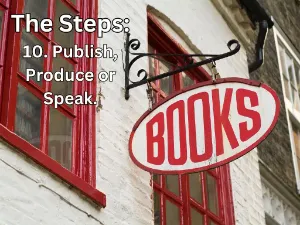Turning books into movies: the wild ride of screenplay adaptation.
By- Robert Grock
Picture this: you’re trying to cram a giant, sprawling oak tree into a tiny flowerpot. That’s what it’s like to adapt a book into a screenplay. Novels are these big, beautiful, messy things, full of tangents and inner thoughts, while screenplays? They’re tight, visual, and need to wrap up in about two hours.
It’s a wild challenge, and adaptation screenwriters are the brave souls who dive in, hoping to capture the book’s magic without butchering it. So, let’s chat about the biggest hurdles they face, how they keep the story’s heart beating, and what authors think when their babies hit the big screen. Grab a coffee, this is gonna be a fun ride.

Take Harry Potter and the Goblet of Fire. J.K. Rowling’s book is a beast. It’s 734 pages of Quidditch, house-elf drama, and magical mazes. Screenwriter Steve Kloves had to ditch entire threads, like Hermione’s elf-liberation campaign, to make it work as a film. How’d he do it? He zeroed in on the story’s emotional core: Harry’s growth, the Triwizard Tournament’s stakes, and Voldemort’s creepy comeback.
Fans still grumbled, because, you know, fans, but the movie kept the book’s pulse. It’s like performing heart surgery: cut too much, and the story dies; don’t cut enough, and it’s a bloated mess. The Great Gatsby (2013) learned this the hard way. Baz Luhrmann’s version had all the glitz but missed Gatsby’s quiet tragedy, leaving fans feeling like they got a party instead of a love story.
Then there’s the whole “show, don’t tell” thing. Books love to crawl inside characters’ heads. Think Pride and Prejudice. Jane Austen spends pages unpacking Elizabeth Bennet’s wit and biases. But movies can’t just narrate someone’s thoughts. Screenwriters have to turn those inner monologues into something you can see.
In The Shawshank Redemption, Stephen King’s novella dives deep into Red’s mind. Frank Darabont, the screenwriter, spun that into pure visual magic: Andy’s quiet defiance, that iconic Rita Hayworth poster, and the rain-soaked escape that makes you wanna cheer. When it works, it’s poetry.
But when it doesn’t? You get clunky voiceovers or characters explaining their feelings like they’re in a soap opera. Dune (2021) dodged this bullet. Denis Villeneuve used sweeping desert shots and subtle glances to show Paul Atreides’ inner struggle, no narration needed. Screenwriters have to be like artists, painting with images instead of words, and that’s no easy feat.
Another big hurdle is walking the tightrope between staying true to the book and making a movie that actually works. Go too far off-script, and fans lose their minds; stick too close, and the film feels like a boring summary. The Hunger Games got this right. Gary Ross kept Katniss’s fire and the dystopian vibes but tweaked the pacing to make the arena scenes pop. Fans ate it up.
But then you’ve got The Hobbit. Peter Jackson took Tolkien’s slim 300-page book and stretched it into three overstuffed movies, tossing in a love triangle that felt like it wandered in from a rom-com. Fans were not amused. The trick is finding that sweet spot, respecting the book’s soul while making bold choices for the screen. It’s like being Goldilocks: not too faithful, not too wild, just right.
And let’s not forget the fans. Book lovers are intense. They’ve lived in these worlds, cried over these characters, and memorized every detail. Change one thing, and they’re ready to riot. Screenwriters have to navigate this minefield while making a movie that stands on its own. Game of Thrones nailed it early on, adapting George R.R. Martin’s books with precision.
But when the show outran the books, choices like the messy Dorne storyline had fans raging. Social media makes it worse. X posts can turn a tiny change into a full-blown scandal. When The Witcher tweaked Ciri’s backstory, X exploded with “betrayal” hashtags. Smart screenwriters listen to fans but don’t let them run the show. It’s a balancing act, not a surrender.
So, how do screenwriters keep the book’s heart intact? They start by figuring out the story’s “why.” What makes it matter? In To Kill a Mockingbird, it’s Scout’s journey from innocence to understanding justice. Screenwriter Horton Foote kept that front and center, even if it meant dropping side characters. They also lean on universal themes: love, loss, courage, that work on page or screen. Collaboration helps, too. Working with directors and actors ensures the story’s spirit shines through.
Greta Gerwig’s Little Women (2019) reshuffled Louisa May Alcott’s novel but kept Jo March’s fiery ambition, proving you can remix a classic without breaking it. Dialogue is another secret weapon. A killer line can carry the book’s essence. William Goldman adapted his own The Princess Bride and kept gems like “As you wish,” making the film feel like the book’s twin. At the end of the day, screenwriters trust their gut. They’re storytellers, not robots, and sometimes a bold change is what keeps the story alive.
Now, what about the authors? Their reactions are all over the map. Some, like J.K. Rowling, get involved. She consulted on Harry Potter, fighting to keep key moments like Snape’s redemption. She’s said she trusted the filmmakers but wanted her vision respected. Others, like Stephen King, are chill, until they’re not. King famously hated Stanley Kubrick’s The Shining, calling it a “beautiful car with no engine” because it ditched the book’s supernatural vibes for psychological horror. He loved the 1997 miniseries, which stuck closer to his story.
Then you’ve got Gillian Flynn, who wrote the Gone Girl screenplay herself. She embraced changes, streamlining the book’s twisty narratives for a taut film, and her X posts at the time were all excitement, no complaints. But not every author handles it well. Michael Ende, who wrote The Neverending Story, called the 1984 movie a “gigantic melodrama of kitsch.” Authors see their books as their kids. When the adaptation soars, they’re proud; when it tanks, they’re ready to disown it.
Adapting a book into a screenplay is like wrestling a bear while juggling flaming torches. Screenwriters have to trim, transform, and dodge fan pitchforks, all while keeping the story’s heart pumping. The best ones, like Kloves, Darabont, or Gerwig, focus on the emotional core, paint with visuals, and balance loyalty with creativity. Authors might cheer or cry, but when it works, it’s a love letter to the book. When it flops? Well, as Dune fans might say, the spice doesn’t flow.
Next time you watch a book-turned-movie, give the screenwriter a mental high-five, or a shout out on X or other social media. They’ve fought the good fight, and sometimes, they come out on top.











